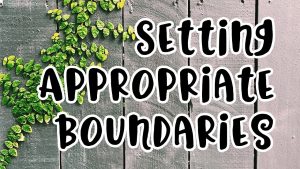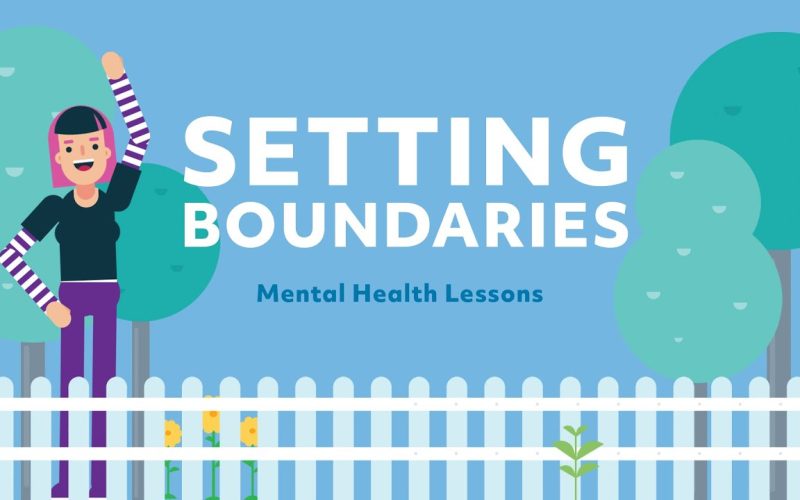In today’s fast-paced world, saying “yes” often feels like the path of least resistance. We want to be helpful, accommodating, and liked by others. However, constantly saying “yes” without considering our own needs can lead to burnout, stress, and an imbalance between work and personal life. Setting boundaries is one of the most powerful tools you can use to create a balanced and fulfilling life. Learning the art of saying no is key to maintaining your mental, emotional, and physical well-being.
This article will explore the importance of setting boundaries, how to say “no” without guilt, and how to use this skill to lead a more peaceful and productive life. Whether it’s managing work commitments, social obligations, or personal goals, boundaries help you prioritize what truly matters.
What Are Boundaries and Why Are They Important?

Boundaries are the limits we set for ourselves in terms of what we are willing to accept from others and what we will tolerate. These boundaries can be physical, emotional, or mental, and they help define the space we need to protect our well-being. Setting boundaries is not about being rigid or unfriendly—it’s about respecting yourself and others by maintaining a healthy balance between your needs and external demands.
In recent years, the importance of healthy boundaries has become more widely recognized. When we fail to set boundaries, we risk becoming overwhelmed, resentful, or burned out. On the other hand, when we effectively set boundaries, we create a sense of empowerment and control over our lives. This allows us to focus on what matters most and build more meaningful, fulfilling relationships.
1. The Power of Saying No

The concept of saying “no” is central to setting healthy boundaries. Many of us are conditioned to say “yes” to every request, whether it’s a work project, a social gathering, or a favor from a friend. While it’s natural to want to please others, saying “yes” too often can quickly lead to feeling overwhelmed, stressed, and spread too thin.
Saying no doesn’t mean you’re being selfish—it’s an act of self-care. It’s about making conscious decisions that prioritize your time, energy, and mental health. When you say “no” to something that doesn’t align with your values or goals, you’re saying “yes” to the things that truly matter.
Saying “no” is an important skill that helps prevent resentment. If you agree to something out of obligation or guilt, you may end up feeling frustrated or upset. Learning to say “no” respectfully is not only healthy for you but also respects others by setting clear expectations.
Tip: Practice saying “no” in low-stakes situations first, like declining an invitation to an event or turning down a request for help that you don’t have time for. This can help you build confidence for more challenging situations.
2. Identifying When to Set Boundaries

To effectively say “no,” it’s important to recognize when your limits are being tested. Often, we find ourselves saying “yes” to things because we feel guilty, pressured, or fear disappointing others. However, the first step to setting boundaries is identifying when you’re nearing your breaking point. Some signs that it’s time to set a boundary include:
- Feeling overwhelmed: If you’re taking on too many tasks, you may start to feel like you’re drowning in work or obligations.
- Fatigue: Constantly saying “yes” without a break can lead to exhaustion, both physically and mentally.
- Lack of time for yourself: If you’re constantly prioritizing others’ needs over your own, it’s a sign that your boundaries need to be reinforced.
- Resentment: If you feel frustrated or upset after agreeing to something, it’s a sign that you might be overcommitting or taking on tasks that aren’t aligned with your priorities.
Tip: Pay attention to how you feel before and after agreeing to something. If you feel drained, guilty, or stressed, it may be time to re-evaluate your commitments.
3. How to Say No with Confidence

Saying “no” can be difficult, especially if you’re concerned about how others might perceive you. However, setting clear boundaries is essential for maintaining a healthy work-life balance and emotional well-being. Here are some tips for saying “no” with confidence:
- Be clear and direct: Instead of over-explaining or justifying your decision, be straightforward and firm. For example, you could say, “I appreciate the offer, but I’m unable to take this on right now.”
- Use “I” statements: When setting boundaries, use statements that focus on your needs rather than blaming others. For example, “I’m feeling overwhelmed and need to focus on my current priorities” rather than “You’re asking too much of me.”
- Offer alternatives: If you want to help but can’t commit to the request, offer another solution. For example, “I can’t do this today, but I can help you next week if that works for you.”
- Don’t apologize excessively: You don’t need to apologize for setting a boundary. It’s okay to acknowledge the request, but you don’t need to feel guilty for choosing to prioritize your well-being.
Tip: Practice your “no” in front of a mirror or with a trusted friend to build your confidence.
4. The Benefits of Setting Boundaries

Setting boundaries isn’t just about saying “no”—it’s about creating space for yourself to thrive. There are numerous benefits to setting healthy boundaries, both for your mental health and your relationships:
- Reduced stress: By setting clear limits, you avoid overcommitting yourself and reduce feelings of overwhelm.
- Improved focus: Boundaries help you prioritize your time and energy, allowing you to focus on your goals and passions.
- Stronger relationships: When you communicate your needs clearly, you foster trust and respect in your personal and professional relationships.
- Better work-life balance: Boundaries ensure you have time for both work and personal life, leading to a more fulfilling and balanced lifestyle.
Tip: Regularly assess your boundaries and adjust them as needed to ensure you’re maintaining balance and prioritizing your well-being.
5. Setting Boundaries in Professional and Personal Life

Setting boundaries applies to both your personal and professional life. In the workplace, boundaries are crucial for preventing burnout and maintaining productivity. You can set boundaries by:
- Saying “no” to additional work when your plate is full.
- Setting clear working hours and communicating them to colleagues.
- Respecting your personal time and not answering work emails after hours.
In personal relationships, boundaries help you maintain healthy dynamics and avoid overextending yourself. For example, you can:
- Say “no” to social invitations if you need time to recharge.
- Communicate your needs to loved ones and ask for support when necessary.
- Avoid taking on emotional labor for others if it’s draining you.
Tip: Practice boundary-setting in all aspects of life, not just work. Healthy boundaries are essential for nurturing both your personal and professional relationships.
Conclusion
Mastering the art of saying no is a crucial step in creating a balanced life. By learning to set healthy boundaries, you protect your time, energy, and emotional well-being. Boundaries allow you to focus on what matters most, reduce stress, and create a more fulfilling life. Though it can be difficult at first, the practice of setting limits will improve your productivity, mental clarity, and relationships.












